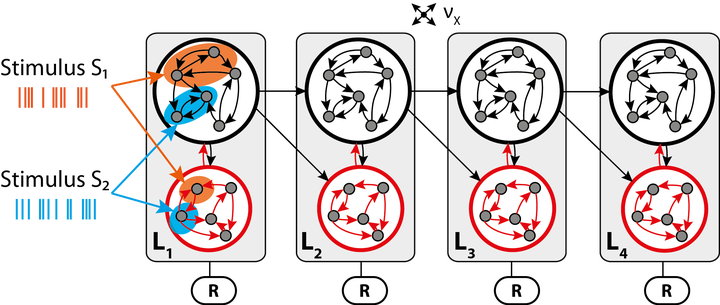Transferring state representations in hierarchical spiking neural networks
Proceedings of the International Joint Conference on Neural Networks 2018

Abstract
Hierarchical modularity is a parsimonious design principle in many complex systems and underlies various key structural and functional aspects of neurobiological systems, whose modules are recurrent networks of spiking neurons. An essential requirement for such systems to adequately function is the ability to transfer information across multiple modules in a reliable and efficient manner. In this work, we study the characteristics of emergent stimulus representations in recurrent, spiking neural networks and the features that allow efficient information transfer among multiple, interacting sub-networks. We find that the specificity of structural mappings between the modules is strictly required for information to propagate to a sufficient depth, in a sequential setup. Conserved topography not only improves computational performance in all scenarios analyzed, but it proves to be more robust against noise and interference effects, results in less variability in the neural responses and increases memory capacity.